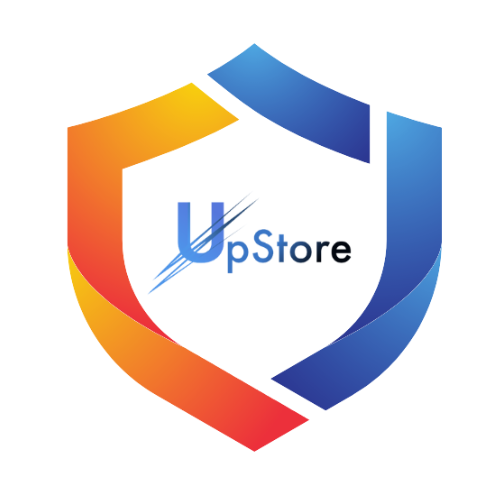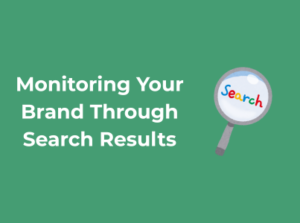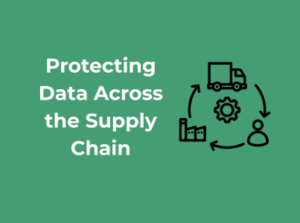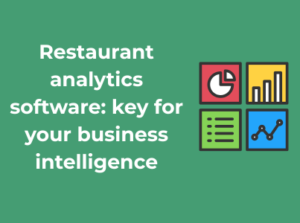Let’s talk Employee IDs! You’ve probably seen those alphanumeric codes printed on work badges, displayed on employee portals, or requested during HR paperwork. But what exactly does Employee ID mean? Don’t worry—this isn’t as complicated as deciphering a cryptic password.
In simple terms, an Employee ID is a unique identifier assigned to each person within an organization. Think of it like a fingerprint for your workplace identity. Instead of calling out Sarah, the third Sarah in accounting, or Michael from IT, organizations use this unique number or code to make sure they know precisely whom they’re referring to. Isn’t that neat? It’s like a virtual name tag, but with better precision!
The Purpose: Why Do Organizations Use Employee IDs?
Employee IDs might seem like a small detail when compared to the larger wheels of an organization, but their importance cannot be overstated. As a unique identifier for each team member, an employee ID does more than just assign a series of numbers or letters to someone’s name—it creates clarity, improves efficiency, and strengthens accountability. Curious about how these little codes serve such big purposes? Let’s walk through it together in a friendly and relatable way.
1. Streamlining Operations
You’ve heard the phrase “time is money,” right? Well, employee IDs embody that principle in action. By assigning a unique identifier to every employee, organizations can quickly access critical information without sifting through piles of paper or endless Excel rows. Whether it’s tracking attendance, managing payroll, or locating a personnel file, an employee ID simplifies processes immensely. Think of it like a key that unlocks just the right door amidst a maze of data!
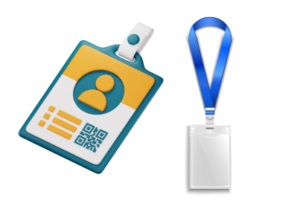
2. Enhancing Security
In today’s world, both physical and digital security are crucial for organizations of any size. Employee IDs help enforce access control, ensuring that only authorized personnel can enter specific areas or access sensitive systems. Pair these IDs with smart technology like ID cards, biometric systems, or secure logins, and you’ve got a tight-knit security net. This not only keeps assets safe but also reassures employees that their workplace is secure.
3. Promoting Accountability
Let’s face it—keeping track of responsibilities in a bustling organization can feel a bit like juggling a dozen balls. Employee IDs help establish clear accountability by linking specific tasks, transactions, or activities to individuals. This is particularly valuable in industries like healthcare, logistics, and retail, where even small errors can have significant repercussions. Say goodbye to “who did what” confusion—it’s all in the system!
4. Driving Personalization
While employee IDs are universal tools, they also enable personalized experiences. For example, when tied to HR platforms or internal systems, IDs can grant employees access to tailored benefits, training programs, and development modules. Imagine logging in and being greeted with resources that are tailored to your role, skills, and career objectives. Pretty empowering, wouldn’t you agree?
5. Simplifying Communication and Collaboration
An organized workplace is often an efficient one. Employee IDs play a critical role here, especially in larger companies where employees may not know each other personally. By using IDs to identify team members in systems, emails, or collaborative projects, organizations can eliminate ambiguity and foster smooth communication. It’s like giving everyone a clear introduction without needing a formal handshake.
6. Supporting Organizational Growth
A scalable organization is one that’s prepared for future expansion. Employee IDs are an integral part of that scalability. They help organizations manage growing workforces without losing track of administrative responsibilities. As the company grows, employee IDs ensure that operational systems remain consistent and efficient.
Format Variations: Is There a Standard Way to Create Employee IDs?
Ah, employee IDs—a tiny combination of letters, numbers, or sometimes even symbols that hold so much information about an employee’s identity within an organization. But here’s the big question: is there a standard way to create these IDs? The short answer is no! Employee ID formats vary widely, and each organization tailors them based on its structure, industry, and specific needs. Let’s dive into how these formats can differ and what you should consider when creating them.
Why Isn’t There a Universal Standard?
The lack of a universal standard comes down to the fact that not all businesses operate the same way. A small independent bookstore won’t have the same employee ID needs as a multinational tech giant, and that’s perfectly okay! Different sectors prioritize different features, ranging from an ID that’s easy to read to one that integrates seamlessly into complicated systems. This means flexibility is key.
Common Types of Employee ID Formats
Even though there isn’t a universal template, here are a few popular formats you’ll often encounter:
- Numerical IDs: These are simple, sequential numbers assigned to employees as they onboard. For example, the first hire may be “001,” followed by “002,” and so on. It’s straightforward and works well for smaller, less complex organizations.
- Alphanumeric IDs: These are combinations of letters and numbers. For instance, “HR001” might represent an HR employee, while “DEV105” could signify someone in the development team. This format is great for categorizing employees by team or department.
- Date-Based IDs: Some companies incorporate the year or month of employment into the ID, like “2023-045” for someone hired in 2023. This gives you an instant timeline for referencing employee tenure.
- Custom Codes: Custom IDs are built on internal logic specific to the organization. For example, a retail chain might assign employees codes based on store location, job level, and hiring sequence (e.g., “NYC-MGR-050” for a manager at the New York City store).
Each system has its pros and cons—numerical IDs may be simpler, while alphanumeric or custom codes offer richer information but can get complicated to manage without thoughtful planning.
Things to Consider When Deciding on a Format
If you’re building or revisiting your employee ID system, keep these tips in mind to make it effective and user-friendly:
- Keep It Scalable: Choose a format that can grow with your organization. For example, if you’re using sequential numbers, ensure your system can handle thousands or even millions of IDs.
- Make It Meaningful (but Not Overcomplicated): Including details like department or hire dates in the ID can be helpful, but don’t make the codes so complex that employees or managers can’t understand them.
- Ensure System Compatibility: If your IDs will interact with payroll software, access control systems, or even time-tracking tools, ensure the format aligns with their requirements. The last thing you want is a logistical nightmare caused by mismatched systems.
- Avoid Overtly Personal Data: Including sensitive details like birthdates in an ID is a big no-no from a privacy standpoint. Stick to neutral identifiers.
Technology Meets Identity: How Modern Systems Handle Employee IDs
Let’s talk about the fascinating intersection of technology and employee identification! Employee IDs may seem like mere strings of numbers and letters, but in today’s digital era, they carry far more significance. Thanks to innovative systems, organizations are streamlining how IDs are used, assigned, and managed to support a fast-paced, ever-evolving workforce. Let me walk you through how modern tools are making this process smarter than ever!
1. Automation: Simplifying the Assignment Process
Gone are the days of manually creating employee IDs on a spreadsheet. Today, many organizations rely on HR software and enterprise resource planning (ERP) solutions to generate IDs automatically. These systems create unique, error-free identifiers, reducing human error while saving time. Pretty cool, right? With just a few clicks, an HR manager can have brand-new employee IDs tied directly to personnel records.
2. Integration with HR and Payroll Systems
A big benefit of modern technology is integration. Many platforms now link employee IDs to crucial systems like:
- Payroll: Ensuring employees are compensated accurately and promptly.
- Time Tracking: Best attendance management software auto-tracks hours and attendance via IDs.
- Performance Management: Tying employee performance reviews or training histories directly to IDs.
This “centralized ID approach” makes it seamless to access data across departments, fostering better coordination and efficiency.
3. Biometric Technology and Smart Access
Modern employee IDs are not just about numbers—they’re becoming smarter, too! Thanks to biometric integrations and ID cards with embedded chips, these IDs now serve dual purposes. For example:
- Secure entry: Employees can scan their ID cards or use fingerprint technology for building access.
- Personalized features: Some badges allow custom privileges, like access to specific departments or restricted files.
This creates a streamlined and secure workplace environment while minimizing risks associated with unauthorized access.
4. Cloud-Based Management for Remote Teams
As remote work continues to grow, cloud-based systems are stepping up to handle employee IDs in new ways. By tying employee IDs to cloud platforms, teams can:
- Access internal systems securely from anywhere using ID-based logins.
- Sync IDs with collaboration tools like Slack or Microsoft Teams.
- Monitor and manage virtual workspace access without geographic limitations.
It’s all about flexibility and ensuring that remote employees feel just as connected to the organization as on-site teams.
5. Leveraging Artificial Intelligence (AI)
AI is playing a significant role in optimizing the administration of employee IDs. For example, modern systems use AI to track and flag issues like duplicate IDs, inactive accounts, or potential anomalies in access patterns. These proactive algorithms ensure efficient ID management while enhancing security. Isn’t that neat?
Security and Privacy: Safeguarding Employee Identifications
Protecting employee identification data is more important than ever in today’s interconnected world. As organizations lean heavily on digital technologies to streamline operations, ensuring the security and privacy of employee IDs has become a critical responsibility. Let’s dive into how businesses can safeguard this sensitive information and why it matters so much.

Why Does Security Matter?
Employee IDs are not just random numbers or alphanumeric codes. They are often gateways to an organization’s resources, systems, and sensitive data about employees. If improperly secured, an employee ID could become a vulnerability that cybercriminals exploit, leading to financial loss, reputation damage, or even legal liabilities for the organization. Protecting these identifiers means protecting your people and your business simultaneously.
Top Strategies to Safeguard Employee Data
So, how can your organization ensure that employee IDs and the information tied to them are well-protected? Here are some powerful yet practical strategies:
- Use Strong Access Controls: Limit who can access the employee ID database. Role-based authorization ensures that only those who need to see or manage this information as part of their job have access.
- Implement Encryption: Always encrypt ID data, whether it’s being stored or transmitted. Encryption adds an extra layer of defense by ensuring the data is unreadable to anyone who doesn’t have the proper key.
- Two-Factor Authentication (2FA): To access systems tied to employee IDs, require 2FA. The additional authentication step makes it exponentially harder for bad actors to break in.
- Regular Audits: Conduct routine checks on the systems handling employee IDs. Look for vulnerabilities, unauthorized access attempts, or outdated security protocols that need an upgrade.
- Data Minimization: Only collect and store the information you absolutely need. The less data you have, the smaller your risk surface in case of a breach.
Don’t Forget Employee Awareness
Your security efforts aren’t complete without involving your team. Employees should understand how their ID data is used and what measures are being taken to protect it. Conducting regular training sessions on best practices (like not sharing their ID or passwords) empowers them to support organizational security efforts.
Handling Privacy with Care
Privacy is the twin sibling of security, and it’s just as critical when dealing with employee IDs. Regulations like GDPR and CCPA emphasize the importance of handling personal and professional data responsibly. To ensure compliance and foster trust:
- Be Transparent: Clearly inform employees about how their ID data is collected, used, and stored.
- Secure Collaboration with IT: Align IT policies with privacy standards to ensure the safe management of employee information.
- Allow Access Requests: Provide employees with options to review and control their own ID-related personal data.
What Happens When Security Goes Wrong?
A breach of employee ID security isn’t just about technical consequences. It can erode trust between the workforce and management. Employees may feel exposed if their information gets into the wrong hands, making it more important than ever for businesses to be proactive about securing this data.
Common Pitfalls: Mistakes to Avoid When Assigning Employee IDs
Assigning employee IDs might seem like a straightforward task—but don’t be deceived. It’s easy to overlook some key details that could lead to complicated issues down the road. Let’s break down the most common mistakes organizations make and how to avoid them. With just a little foresight, you can save yourself a lot of trouble later on!
1. Lack of a Clear System
One of the biggest blunders is diving into the process without a well-defined plan. Assigning IDs “on the fly” or based on ad hoc criteria can lead to chaos as your team grows. For example, manually assigning numbers may work for your first five employees, but what happens when your team scales to a hundred—or a thousand?
Solution: Think long-term! Use systems like structured formats with combinations of letters, numbers, or department codes. A clear, predetermined pattern will make record-keeping and future adjustments a breeze.
2. Reusing Employee IDs
Recycling old IDs—say, assigning an ex-employee’s ID to a new hire—may seem efficient, but it can wreak havoc on your records. Imagine the confusion when someone mistakenly retrieves information for the wrong individual. Plus, data overlap from reused IDs can spell tracking nightmares in payroll and HR systems.
Solution: Treat each ID as permanently retired once it’s been used. This ensures unique identification, avoiding cross-referencing mishaps and embarrassing mix-ups.
3. Including Personal Information
IDs that incorporate sensitive or personal details, like birthdates, initials, or Social Security numbers, may unintentionally pose privacy risks. Not only can this information be exploited if accessed by unauthorized individuals, but it can also erode trust between employees and the organization.
Solution: Keep IDs generic and unrelated to personal data. A random alphanumeric sequence works best. This preserves privacy and makes IDs harder to guess or misuse.
4. Creating Overly Complex IDs
While structure is essential, it’s possible to overcomplicate it. Employee IDs that are unnecessarily long or filled with confusing combinations are a nightmare for everyone who needs to use or remember them. For instance, an ID like EE##XYBZ09724-AA567 is likely to frustrate employees and clog up processing systems.
Solution: Strike a balance! Keep IDs concise yet unique. Something like E12345 or HR5678 is simple, functional, and gets the job done without the head-scratching.
5. Neglecting to Train or Inform Staff
Sometimes, organizations assign IDs but fail to explain their purpose or how they’ll be used. This can lead to underutilization or employees mishandling IDs altogether. What’s the point of a robust system if it’s misunderstood?
Solution: Include ID-related instructions as part of onboarding. Explain why IDs matter, where they’re needed (like logging into systems or accessing resources), and how they help the organization stay organized. A little clarity goes a long way!
6. Skipping Regular Audits
Over time, the numbers can stack up, and errors or duplicates can creep in. Organizations that avoid periodic ID audits may find themselves tangled in inconsistent records or outdated practices.
Solution: Schedule periodic reviews to ensure your system remains clean and up-to-date. Routine checks will help you catch any errors early, prevent redundancy, and keep your system running smoothly.
Beyond Numbers: How Employee IDs Support Organizational Growth
When most people think about employee IDs, they picture a series of numbers or maybe an alphanumeric string. But did you know that employee IDs are more than just a set of digits? They play a crucial role in driving organizational growth. Yes, those little employee identifiers quietly work in the background, building efficiency, fostering transparency, and supporting innovation. Let’s dive into how something so seemingly simple can create a ripple effect within an organization.
1. Streamlining Operations for Efficiency
First and foremost, employee IDs are a game-changer for operational efficiency. Each employee tied to a unique ID allows organizations to store, access, and manage core data quickly. Think about payroll, for example. Without a centralized system to identify employees, processing salaries, reimbursements, and tax deductions could be a logistical nightmare.
Moreover, employee IDs ensure that communication between departments remains smooth. Supervisors and HR teams can track an employee’s progress, attendance, and contributions without having to sift through pages of confusing spreadsheets. The result? A faster, more focused work environment that saves time and optimizes resources.
2. Building Accountability and Transparency
Transparency is the glue that holds organizational culture together, and employee IDs help ensure that everyone stays on track. With unique identifiers, every employee has a digital “footprint” within an organization. This helps in tracking tasks, workflows, and project ownership.
For example, imagine a collaborative project where multiple team members are contributing. Thanks to the categorization enabled by these IDs, leaders can easily identify who performed what tasks and when. This not only boosts accountability but also gives recognition where it’s due, fostering a positive workplace environment.
3. A Strong Foundation for Data-Driven Decisions
In today’s era of big data, making informed decisions is essential for growth. Employee IDs make it easier for organizations to gather and analyze trends about their workforce. Want to identify which department has the highest retention rate? Or figure out the ratio of overtime hours to project completion rates? Employee ID systems make it simple to pull accurate and actionable insights.
These metrics and patterns directly feed into organizational strategies. By understanding workforce trends, companies can refine recruitment strategies, improve employee engagement initiatives, and optimize resource allocation. In short, these IDs become the thread that connects data to smart decision-making.
4. Supporting Employee Development
Did you know employee IDs also contribute to personal and professional growth? With the data linked to these IDs, HR teams can track an individual’s contributions, performance reviews, completed training programs, and more. This makes it easier to design personalized growth plans and ensure that employees have access to the right opportunities for upskilling or career advancement.
From identifying training needs to mapping career trajectories within the company, employee IDs can pave the way for a more developed, skilled, and satisfied workforce. And guess what? A happy, well-trained team is the backbone of a thriving organization.
5. Facilitating Long-Term Scalability
As organizations grow, so does the complexity of managing their workforce. Here’s where scalable employee ID systems come into play. Whether a company has 50 employees or 50,000, unique identifiers ensure a seamless scale-up. They serve as a foundation for advanced systems like enterprise resource planning (ERP), HR management software, or even remote work platforms.
By establishing a solid infrastructure with employee IDs early on, businesses can prepare themselves for growth without the risk of crumbling under the weight of administrative chaos. This adaptability and foresight are what help a company stay ahead of the curve.
